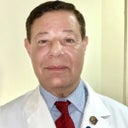Posted underScar Removal q&a
How to treat scar tissue lump/thickened skin in my cheek from subcision complication? (Photos)
Hi there, please help: 3+ years ago I had Taylor Liberator subcision performed on my cheeks for acne scarring, it was a very aggressive procedure that left me with a hematoma in my right cheek during the night of the surgery date. In the morning it was drained (manually squeezed out). Ever since then I have a small lump in my right cheek which is making my face asymmetrical because the lump protrudes my right cheek, extending my nasolabial folds on my right side. The area feels like thickened skin/or a small lump in my right cheek. I am 3 years post and this is not resolving by itself so I would really like some advice on treatment options please. I cannot see the treating Doctor as they don't know how to treat this complication. I have attached some clear photos, any help would be hugely appreciated, let me know if you have any questions and I can answer right away. Happy to travel worldwide for solutions. Thank you.
Answers (3)
From board-certified doctors and trusted medical professionals

Dr. Nelson Lee Novick, MD
Dermatologic Surgeon, Board Certified in Dermatology
Answer
More Scar Removal Questions
See all Scar Removal Q&AWE SEND PRETTY
EMAILS
What’s trending? Who’s turning heads? Which TikTok myths need busting? We’ve got you. No fluff, no gatekeeping—just real talk. Get our free, unfiltered newsletter.

